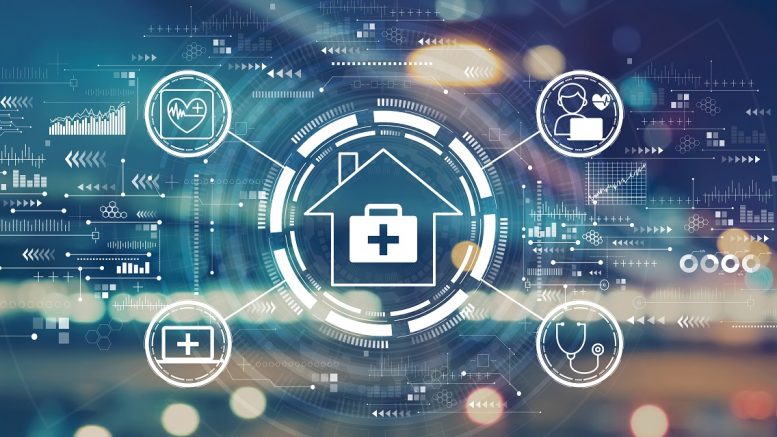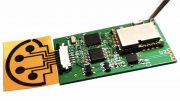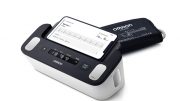Gavin Bashar, UK managing director at Tunstall Healthcare, discusses how technology can help geographically distanced families connect and be more involved with care provision.
Like most developed nations, the UK’s population is ageing; by 2030, one in five people in the UK (21.8%) will be aged 65 or over.
But although we are living longer, we are not necessarily living more healthily. Long-term conditions like heart disease, diabetes and COPD are placing pressure on the UK’s National Health Service (NHS), accounting for 50% of all GP appointments and 70% of all hospital bed days. Their treatment and care absorbs 70% of acute and primary care budgets in England.
This has led to more people living with complex care needs that require significant interventions and monitoring from our health and care services. This can not only impact their own health and wellbeing, but that of their family members who may worry whether they are receiving the right care at the right time.
Connecting geographically distanced families through technology
Investment in technology has a multiplier effect in terms of increasing efficiencies such as reducing burdens on carers, to empowering individuals and their families to have greater control over their own health and wellbeing and in turn, improving the overall effectiveness of our services.
Raising awareness of the technology solutions that are available within the health and social care sectors is vital to provide geographically distanced families with peace of mind that their loved ones are being cared for effectively. By developing an understanding of the way that data is collected, stored and processed, families will be able to play a part in ensuring their loved one is being monitored by clinicians and other stakeholders.
The wider digital transformation and application of data analytics will develop smarter management of operations, allocation of resources, collaboration across teams and services and ultimately, better delivery of care. With the right digital frameworks in place, the integration of technology can become focused on the citizen, their choices, their health, their care, where institutions no longer work in silo and can provide better outcomes for citizens.
Through this improved collaboration, communication, and allocation of resources, it will be easier to keep geographically distanced families up-to-date with the care that their loved one is receiving, alongside giving them opportunities to share their recommendations of how to deliver care and engage with their relatives effectively. Ultimately, families have the best interests of their loved ones at heart, so it’s important that they are consulted where appropriate and technology plays a crucial part in enabling this.
The benefits of technology
New technologies can support the effective delivery of health and social care; enabling early intervention and avoiding the need for more complex care, hospitalisation and ambulance call outs. Such technology is scalable, cost-effective and empowers individuals to take control of their own health and allows them to live independently for longer.
These initial benefits can ease the pressure both physically and mentally on vulnerable people and their family members, and can play a key role in services being delivered in innovative ways, placing citizens and their families at the heart of decision making, and enabling health, housing and care providers to target support where it’s needed most.
Devices that once seemed like science fiction are being used to support vulnerable people to live safer, healthier and more enjoyable lives as they age, whether at home or in group living environments. Relatively low-cost telecare systems can automatically raise a call for help if they sense someone has fallen, or alert a sleeping carer if the person they care for experiences a seizure. This 24-hour support can help to avoid hospital admission delay, prevent the need for residential care, and reduce carer burnout as the people they are responsible for are monitored consistently for changes in behaviour and emergency events.
Existing solutions can also support the effective delivery of healthcare at home; for example, remote patient monitoring (RPM) enables early intervention and care to be person-centred, rather than place-based.
Digital technologies have tremendous potential to improve the lives of an ageing population. They can enhance the services on offer, giving people greater independence and control over their care and are proven to help support wellbeing. They can free up the time for more face-to face care, and help care providers to operate more efficiently, so they can do more to look after those they support and their employees.
Next steps
Investing time in exploring existing and emerging technology and educating vulnerable people and their family members is paramount to enabling us to shape our services around the people who use them and keep family members engaged and connected with the health and wellbeing of their loved ones.
We should also educate staff about the benefits and how to use technology-based care effectively, so that we can ensure all stakeholders are able to commit with confidence to the transformation of services. By understanding how the greater integration of technology can enable better communication with and engagement of family members, care provision can become more personalised, with the needs of an individual kept front of mind.
As technology continues to touch every aspect of modern life, we must not miss the chance to harness its power to support our ageing population’s health, wellbeing and quality of life, and ensure we are keeping their families connected and engaged.





